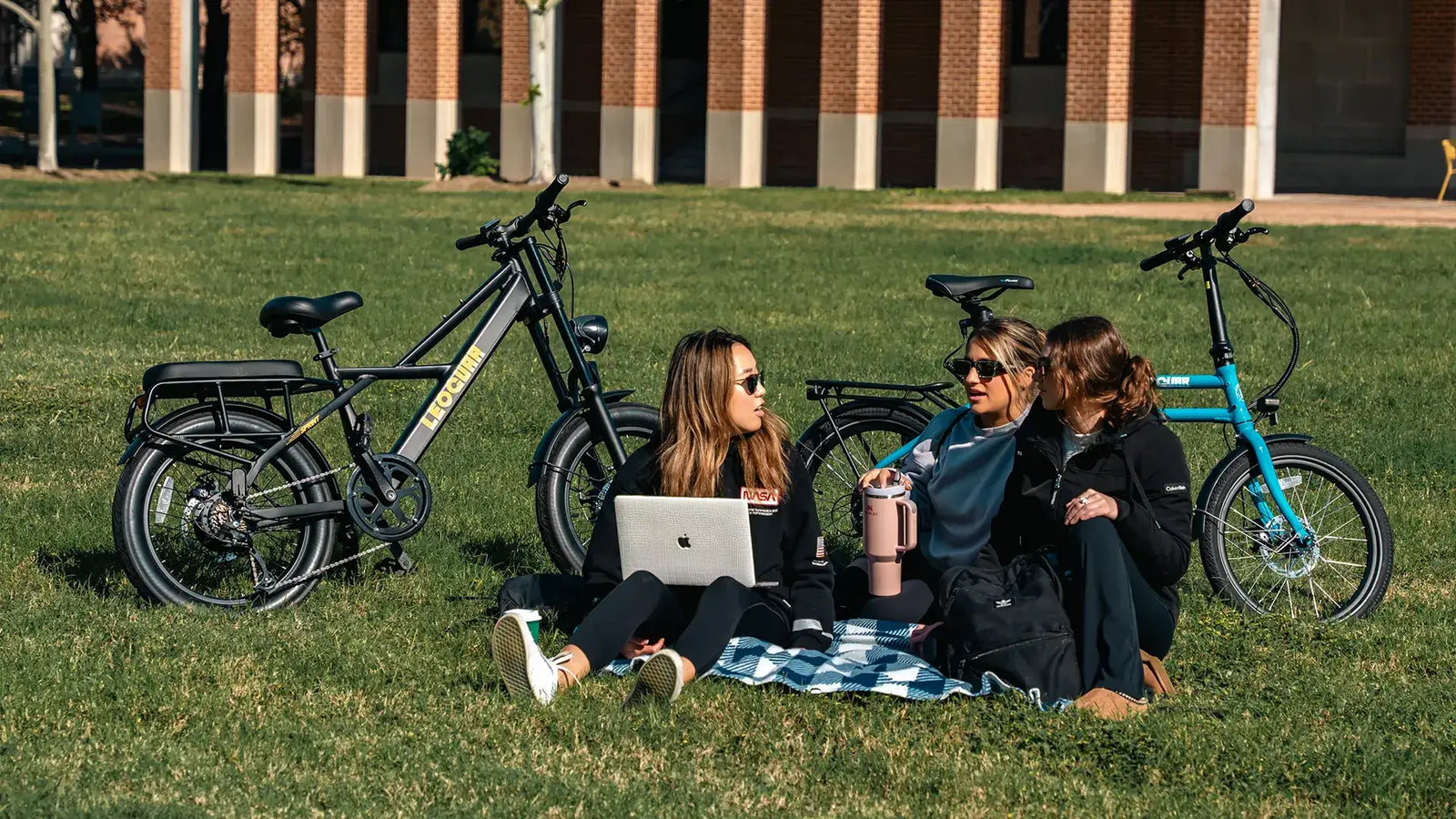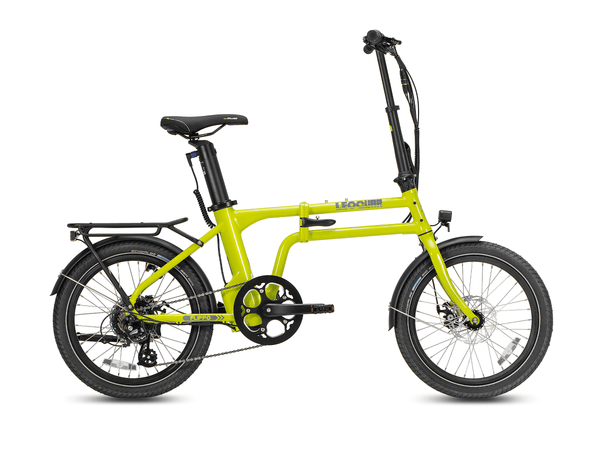
First eBike Buying Guide: Everything You Need to Know
Getting Started with Your First Ebike
Getting into electric bikes is exciting. The idea of easier hills, no sweat rides, and longer trips sounds great. But all the choices, tech words, and prices can feel overwhelming. This guide will help you step by step. We'll help you figure out what you need, understand the technology, and pick the right first ebike to save time, avoid mistakes, and find your perfect ride.
A 5-Minute Self-Assessment
Before looking at any bike, stop and think. These five questions will help you make a personal e-bike plan. This helps you choose a bike that really fits your life, not just one that looks cool in ads.
Define Your Purpose
Be honest about what you'll use your first ebike for.
* A 5-mile daily ride to work?
* Weekend easy rides on paved park paths?
* Going up steep hills in your area?
* Carrying groceries or a child?
* Replacing your car for most short trips?
Consider Your Terrain
Think about where you'll ride most. The ground under your tires matters a lot.
* Smooth, paved city streets and bike lanes?
* Mostly flat ground with some small hills?
* Gravel paths or packed dirt trails?
* Hilly areas with long, steep climbs?
* Rough, technical off-road trails?
Assess Portability and Storage
Think about owning and storing your bike.
* Do you live on the third floor with no elevator?
* Will you need to lift the bike onto a car rack?
* Do you plan to use trains or buses with your bike?
* Is your storage space just a small closet or corner?
Determine Your True Budget
An e-bike costs more than just its price.
* What's the most you want to spend on the bike?
* Have you saved an extra 10-15% for must-have accessories? This includes a good helmet, strong lock, and lights. We'll talk more about this later.
Gauge Your DIY Comfort
How much work you want to do affects where you should buy.
* Are you okay with basic tasks like fixing flat tires, adjusting brakes, or tuning gears?
* Or would you rather have professional help for any service needs, from putting it together to yearly tune-ups?

Decoding the Tech Jargon
E-bike spec sheets can look confusing. Let's break down the three most important parts: the motor, battery, and legal types. Understanding these helps you compare bikes based on what really matters.
Hub vs. Mid-Drive Motors
The motor is your e-bike's heart. Where it sits changes how the bike feels and works. Early e-bike patents, like Ogden Bolton Jr.'s in 1895, had hub motors, while mid-drive ideas appeared as early as 1897 from Hosea W. Libbey.
-
Hub-Drive Motors: These sit in the center of the front or rear wheel and push or pull the bike along. They cost less, work simply, and need less care. They work great on flat to medium hilly ground and are perfect for budget buyers who want a simple commuter or cruiser. It feels like getting a steady, helpful push from behind.
-
Mid-Drive Motors: These sit at the crankset where the pedals attach and send power directly to the chain. This lets the motor use the bike's gears, just like you do. This works better, especially on steep hills. The ride feels more natural, like your own pedaling got stronger. They're standard for performance e-bikes, especially electric mountain bikes.
Understanding Battery Specs
If the motor is the engine, the battery is the gas tank. Don't get confused by all the numbers; focus on the one that matters most for how far you can go.
- Volts (V): Think of this as the force or pressure of the electrical system. Most e-bikes use 36V or 48V systems. Higher voltage can deliver power better.
- Amp-hours (Ah): This measures how much the battery can hold, like the size of a gas tank. A higher Ah number means the battery can keep going longer.
- Watt-hours (Wh): This is the most important number for comparing range. It shows the total energy stored in the battery (Volts × Amp-hours = Watt-hours). A 48V 10Ah battery has 480Wh of energy. A 36V 13Ah battery has 468Wh. The 480Wh battery will usually go farther, if everything else is the same.
Most modern lithium-ion e-bike batteries work for 500-800 full charges before they start to lose power. Real-world range can change a lot, from 20 to over 100 miles, depending on hills, assist level, rider weight, and wind.
E-Bike Classes Explained
In the United States, e-bikes fall into three classes. These commonly accepted classifications decide how and where you can ride. Always check your local and state rules, as they can be different.
| Class | Top Assisted Speed | Throttle? | How it Works |
|---|---|---|---|
| Class 1 | 20 mph | No | The motor helps only when you pedal. It stops helping at 20 mph. |
| Class 2 | 20 mph | Yes | The motor works with pedaling or a throttle. The throttle lets you move without pedaling. Help stops at 20 mph for both ways. |
| Class 3 | 28 mph | No (usually) | The motor helps when you pedal up to 28 mph. These bikes usually don't have a throttle. They're often called speed pedelecs. |
Choosing Your E-Bike Type
With your self-check done, you can now match your needs to a specific type of e-bike. This will cut your search from hundreds of models to just a few.
Commuter and Hybrid E-Bikes
- Description: These are the do-everything bikes of the e-bike world. They have a comfortable but efficient riding position, medium-wide tires for city streets, and often come with fenders and a rear rack.
- Ideal For: Daily commuting, running errands, and fitness rides.
- Who It's For: Riders whose main purpose is transportation on paved roads and who want practical and efficient bikes.
Cruiser E-Bikes
- Description: All about comfort. Cruisers have wide, swept-back handlebars, a soft seat, and a relaxed, upright riding position. They focus on smooth, easy rides over speed and performance.
- Ideal For: Easy rides along the beach, through parks, or around the neighborhood.
- Who It's For: Riders who want leisurely rides and will stick to mostly flat ground. Style and comfort are their top goals.
Folding E-Bikes
- Description: The name tells the story. These bikes have hinges on the frame and handlebars that let them fold into a small package. They usually have smaller wheels to help with carrying.
- Ideal For: Using with public transport, storing in small apartments or offices, or putting in car trunks.
- Who It's For: Riders for whom portability and storage was a big concern.
Electric Mountain Bikes (eMTB)
- Description: Built for trails. eMTBs have tough frames, suspension forks (and often rear suspension), knobby tires, and powerful mid-drive motors. They're made to climb steep, technical terrain easily.
- Ideal For: Tackling challenging off-road trails and exploring the backcountry.
- Who It's For: Riders whose usual terrain is rugged off-road trails and who want help to get more rides in or go on longer adventures.
Cargo and Utility E-Bikes
- Description: The workhorses of the e-bike family. They have longer, stronger frames and are made to carry heavy loads, from multiple bags of groceries to one or two children in special seats.
- Ideal For: Replacing a car for family errands, making local deliveries, or just hauling lots of gear.
- Who It's For: Riders whose main purpose involves carrying cargo and who need a stable, powerful platform to do it safely.
Where to Buy Your First Ebike
Your DIY comfort level from the self-check is key to this choice. Both online brands and local shops have clear benefits.
The Local Bike Shop (LBS)
A traditional bike shop offers hands-on experience you can't get online.
* Pros: Being able to test ride multiple models is the biggest advantage. You get a real feel for the bike's size, handling, and motor. Shops provide professional assembly, expert fitting for comfort, and most importantly, after-sale service and warranty support.
* Cons: Prices are usually higher to cover costs, and selection may be limited to brands the shop carries.
* Best For: Riders with low DIY comfort who value in-person support, service, and peace of mind from professionally assembled and maintained bikes.

Online Direct-to-Consumer (DTC)
Buying an e-bike online has become popular, offering big cost savings.
* Pros: Prices are often much lower since you buy directly from the maker. The selection is huge, letting you compare dozens of brands and models from home.
* Cons: You can't test ride before buying. The bike arrives in a box, requiring you to do final assembly, which can be hard for beginners. If problems come up, you'll work with customer service remotely and may need to find a local shop willing to work on a brand they don't sell.
* Best For: Riders comfortable with mechanical tasks, who understand bike sizing, and are willing to trade hands-on service for lower prices.
Essential First E-bike Accessories
Remember the true cost budget. Your purchase isn't done without a few ebike must-have accessories to ensure safety and usefulness from day one.
- A Quality Helmet: This is required. Look for a helmet with CPSC (Consumer Product Safety Commission) approval in the US. Consider models with MIPS (Multi-directional Impact Protection System) for extra safety.
- A Strong Lock: E-bikes are big investments and targets for theft. Budget for a high-quality lock. A heavy-duty U-lock or thick chain lock from a trusted brand is smart. Don't rely on thin cable locks.
- Lights: Even if your bike comes with built-in lights, powerful, USB-rechargeable front and rear lights are crucial for being seen by others, day or night.
- Fenders and a Rack: If your bike doesn't include them, consider adding them. Fenders will keep you clean and dry from road spray, and a rear rack greatly increases the bike's usefulness for carrying bags or panniers.
Your Journey Begins
Choosing your first ebike is about discovery. By starting with a clear understanding of your needs, you've built a powerful filter to navigate the market. You can now confidently look at spec sheets, identify the right type of bike, and make an informed decision about where to buy it. The perfect e-bike isn't the most expensive or most powerful one; it's the one that fits seamlessly into your life and makes you smile every time you ride. Now take your plan, start your research, and get ready to enjoy the ride.
Frequently Asked Questions
1. Q: How far can I ride on a single charge with my first ebike?
A: Range varies widely from 20 to over 100 miles depending on battery size, terrain, assist level, rider weight, and weather conditions. Most riders get 30-50 miles on a single charge with moderate use.
2. Q: Do I need a license or registration for my e-bike?
A: In most US states, Class 1 and Class 2 e-bikes don't require licenses or registration. Class 3 e-bikes may have different rules depending on your state. Always check local laws before riding.
3. Q: How much should I budget for my first ebike?
A: Quality entry-level e-bikes typically cost $1,000-$2,500. Add 10-15% for essential accessories like helmet, lock, and lights. Higher-end models can cost $3,000-$5,000 or more.
4. Q: Can I ride my e-bike in the rain?
A: Most e-bikes are water-resistant and can handle light rain, but avoid heavy downpours or deep puddles. The electrical components are sealed but not completely waterproof. Always dry your bike after wet rides.
5. Q: How long do e-bike batteries last and how much do replacements cost?
A: Most lithium-ion batteries last 500-800 charge cycles (about 3-5 years of regular use) before noticeable capacity loss. Replacement batteries typically cost $300-$800 depending on capacity and brand.










































Leave a comment